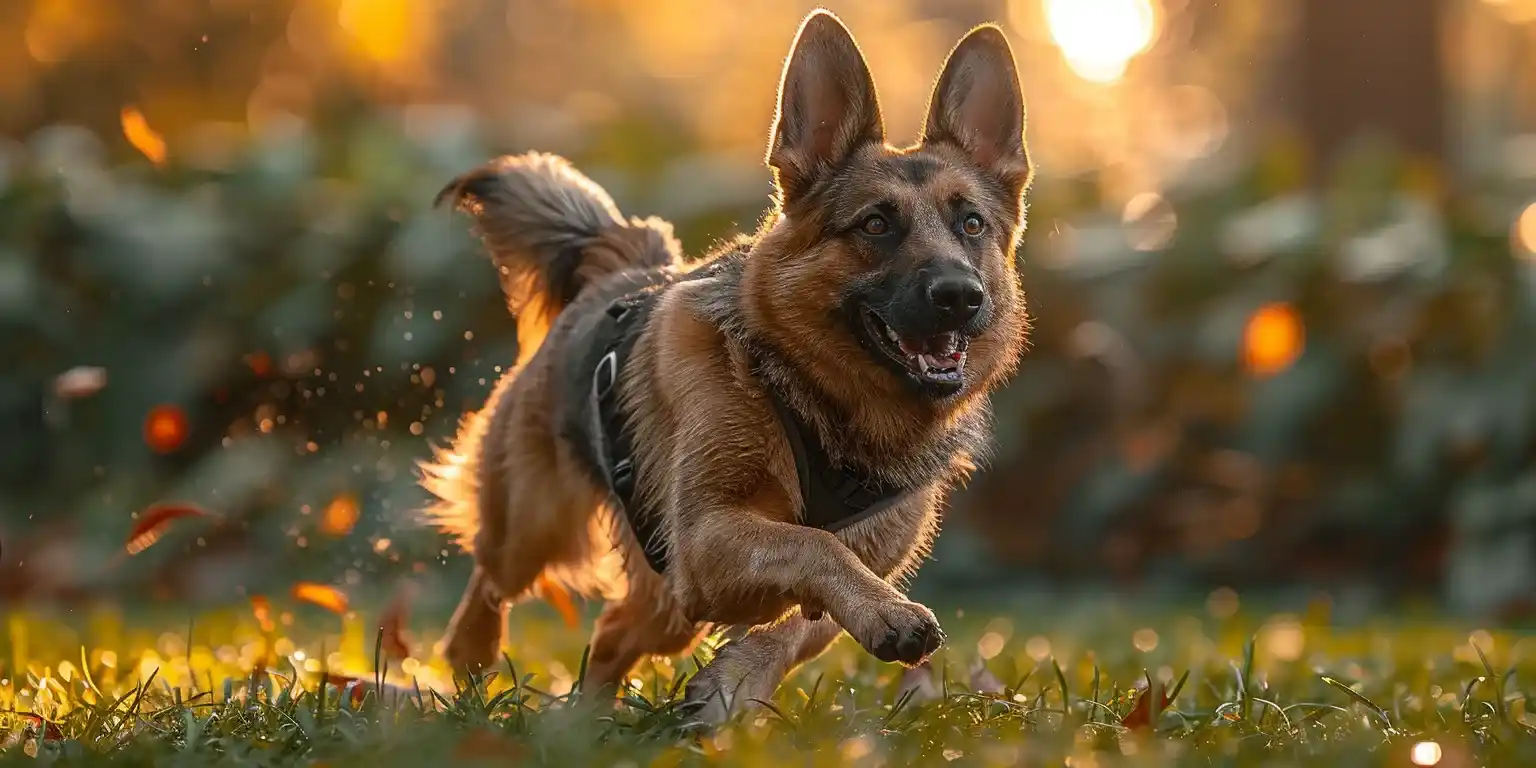When you’re scouring the pet store or browsing online for that perfect dog harness, the variety can be overwhelming. But have you ever wondered, What shape harness is best for my dog? Well, buckle up (pun intended), because we’re diving deep into the world of dog harness shapes and their unique benefits!
Dog harnesses are generally divided into Y-shaped harnesses and H-shaped harnesses. The Y-shaped harness does not restrict the dog’s shoulders and is best for running dogs. The H-shaped harness restricts the dog’s walking and is more suitable for pulling and training dogs.
Harnesses come in various shapes and designs, each with its specific purpose and set of advantages. As someone who’s evaluated countless pet products, I’ve come to appreciate the subtleties that can make or break your dog’s comfort and safety. Today, let’s explore why choosing the right shape harness is more than just a matter of style.
Why Does Harness Shape Matter?
Imagine wearing a pair of shoes that sort of fit, but not quite. That’s what the wrong harness can feel like for your dog. The shape of a harness plays a crucial role in how it distributes pressure across your dog’s body, affecting everything from comfort to control. Different shapes cater to various needs, from the robust puller to the escape artist.
The two most common types you’ll encounter are the H-shaped harness and the Y-shaped harness. Let’s compare these to help you decide which might be best for your furry friend.
What is an H-Shaped Harness?
The H-shaped harness is a classic. It looks like its namesake letter, with straps encircling the neck and back, connected by straps that run along the chest and under the belly. This design offers good control over your dog without too much restriction, making it ideal for casual walks and basic training.
- Pros: Even distribution of pressure, which helps in preventing injury. Great for dogs that are still in training and not prone to pulling excessively.
- Cons: It might not prevent pulling as effectively as other designs and can sometimes allow clever dogs to wriggle free.
What About Y-Shaped Harnesses?
The Y-shaped harness, as you might guess, forms a Y across your dog’s chest. This style is increasingly popular because it allows for freedom of movement in the shoulders, which is particularly beneficial for active dogs that enjoy running and agility training.
- Pros: Offers more control on walks, particularly with strong pullers. The design also minimizes pressure on the neck, safeguarding your dog’s trachea and spine.
- Cons: They can be a bit more complicated to fit correctly and might not be suitable for dogs with sensitive skins due to the narrower straps.
Which Harness Shape is Best?
The answer depends on your dog’s breed, behavior, and the activities you two engage in together. If you’re often out and about in the woods or enjoying a run, a Y-shaped harness might be your best bet. For casual daily walks and a dog that doesn’t pull much, an H-shaped harness would generally suffice.
For those who are in the market, our very own QQPETS harnesses are designed with your dog’s comfort and safety in mind, available in both H and Y shapes to suit all your canine adventures.
How to Fit Dog Harness
No matter the choice, ensuring the correct fit is crucial. A poorly fitting harness can lead to discomfort, escape, or even injury. Always ensure there is enough room to slip two fingers under any strap to confirm a snug, but not tight, fit.
Final Thoughts
Choosing the right harness shape is about understanding your dog’s needs and activity level. Both H and Y-shaped harnesses have their place in the pet care toolkit, with each offering specific benefits.
Conclusion
Whether it’s an H or a Y-shaped harness, the best choice will support your dog’s lifestyle while ensuring safety and comfort on your shared journeys. Always opt for quality, durability, and a good fit when selecting a harness.
QQPETS is the leading custom dog harness manufacturer of adjustable harnesses for dogs and other items that people may use when walking their dogs. Our goal is to make dog walking easy for pet owners by providing valuable accessories. We offer a variety of customization services including custom logos, custom graphics, custom products and more. If you want to start your dog products business, check out our website and contact us today.
FAQ about dog
Why are Y-shaped Harnesses Better?
Y-shaped harnesses are often considered better because they provide several key benefits:
- Reduced Pressure on the Neck: They distribute pressure more evenly across the chest and back instead of concentrating it on the neck, which can help prevent injuries related to pulling.
- Increased Mobility: The Y-shape allows for a more natural range of motion in the shoulders, which is ideal for active dogs that run and play, as it does not hinder their movement.
- Comfort and Fit: This design tends to fit more comfortably around the body, reducing the risk of rubbing and chafing under the legs and around the neck.
What is the Safest Type of Harness for a Dog?
The safest type of harness for a dog is typically one that:
- Distributes Pressure Evenly: Avoids putting pressure on the neck and throat, such as Y-shaped and vest-style harnesses.
- Fits Well: Properly adjusted to match the dog’s size and shape without being too tight or too loose.
- Made from High-Quality Materials: Durable and breathable materials that can withstand wear and tear while keeping the dog comfortable.
How Do I Choose a Good Dog Harness?
Choosing a good dog harness involves several considerations:
- Measure Your Dog: Know your dog’s chest and neck measurements to ensure the harness fits properly.
- Identify Your Needs: Consider your primary use for the harness (e.g., everyday walks, hiking, training).
- Check for Adjustability: Look for harnesses with adjustable straps to fine-tune the fit.
- Material and Comfort: Select materials that are durable yet comfortable for your dog, and check for any additional padding that might increase comfort.
- Read Reviews: Look at what other pet owners have said about the harness, especially in terms of durability, ease of use, and how well it stays in place.
How Should a Harness Look on a Dog?
A properly fitting harness should:
- Sit Comfortably: The harness should lie just above the strongest part of the chest and below the neck, not touching the throat.
- Allow for Two Fingers: You should be able to slide two fingers under any strap of the harness, ensuring it’s snug but not tight.
- Stay Centered: While the dog moves, the harness should remain in place and not shift significantly to either side.
- Cover the Right Areas: Ensure the harness does not rub or irritate sensitive areas like behind the legs or under the belly.


